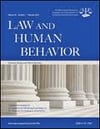
Bivariate and multivariable mixed effects logistic regression analyses were used to examine individual, assault, and context-level predictors of reporting on 397 incidents of staff sexual misconduct. The final model revealed that 6 predictors (age at time of assault, physical injury, multiple incidents, perpetrator with multiple victims, the year the abuse began, and the number of years women have left on their sentence) account for 58% of the variance in reporting. Disclosure to inmate peers and/or family and friends was significant in the bivariate results. This is the bottom line of a recently published article in Law and Human Behavior. Below is a summary of the research and findings as well as a translation of this research into practice.

Featured Article | Law and Human Behavior | 2017, Vol. 41, No. 4, 361-374
Sexual Misconduct in Prison: What Factors Affect Whether Incarcerated Women Will Report Abuses Committed by Prison Staff?
Authors
Sheryl P. Kubiak, Michigan State University
Hannah J. Brenner, California Western School of Law
Deborah Bybee, Michigan State University
Rebecca Campbell, Michigan State University
Cristy E. Cummings, Michigan State University
Kathleen M. Darcy, University of Chicago
Gina Fedock, University of Chicago
Abstract
More than 80,000 prisoners each year are sexually victimized during incarceration, but only about 8% report victimization to correctional authorities. Complicating reporting is the fact that half of the perpetrators are staff members. Given the restrictive and highly regulated prison environment, studies that examine reporting behaviors are difficult to conduct and to date information available relied on those who have reported or hypothetical victimization studies. This study uses an ecological framework and archival data from a class action lawsuit of sexual misconduct to determine predictors of reporting. Relying on a subsample of 179 women, chosen because they have all experienced at least 1 penetration offense, we use bivariate and multivariable mixed effects logistic regression analyses to examine individual, assault, and context-level predictors of reporting on 397 incidents of staff sexual misconduct. The final model revealed that that 6 predictors (age at time of assault, physical injury, multiple incidents, perpetrator with multiple victims, the year the abuse began, and the number of years women have left on their sentence) account for 58% of the variance in reporting. Disclosure to inmate peers and/or family and friends was significant in the bivariate results. These findings indicate the need for stronger and more systematic implementation of Prison Rape Elimination Act guidelines and remedies that create and enforce sanctions, including termination, for staff violating policy and state law.
Keywords
incarcerated women, Prison Rape Elimination Act, reporting, staff sexual misconduct
Summary of the Research
“Given the growing national attention to the issue of sexual assault within prison settings and the national implementation of federal guidelines for the prevention and reduction of such assaults mandated by the Prison Rape Elimination Act (PREA), it is important to understand what factors influence the reporting of sexual assault during incarceration…Therefore, the purpose of this study is to explore what factors predict whether women who were sexually assaulted by staff while in prison report the abuse in an effort to inform and enhance the implementation of PREA” (p.362).
“The current literature suggests that individual, assault, and contextual factors affect victims’ decisions to report a sexual assault to authorities in noninstitutional environments. Some research suggests that similar factors may shape reporting decisions for incarcerated and nonincarcerated victims,,.however additional research is needed to explore factors unique to the prison experience and to enhance our understanding of the dynamics that affect prison reporting. The salience of studying these dynamics is particularly poignant when the primary authority figures that prisoners report to are staff members, in this case, also the same group that is perpetrating the victimization” (p.364).
“Logistically, reporting sexual victimization in prison requires the victim to notify an officer or other departmental staff. Per PREA standards, any notification of sexual victimization to departmental staff – whether verbal or written – sets in motion policies and procedures for staff reporting the incident to others in authority…For this study, records from a specific class action lawsuit, filed on behalf of victimized incarcerated women within one state, were used…the cases in this class action lawsuit constitute a sample with a naturally occurring comparison group: incarcerated women who experienced sexual assaults but did not report the abuse to prison authorities and those who experienced assaults and did report the abuse” (p.364).
“The aim of this study is to explore what differentiates the two groups of women by asking these specific research questions: (a) What individual, assault and contextual factors predict reporting sexual victimization within prison? (b) What combination of predictors produces the strongest model for predicting reporting by incarcerated women?…within this sample, we saw much higher frequencies of reporting. In fact, 112, of the 179 (62%) women reported at least one incident of sexual misconduct by a male staff member, a rate much higher than would be anticipated given the national data and previous research” (p.364-370).
“Of the individual level factors, only victim age was significant. In contrast to community studies, where older women are more likely to report than younger women, we found that age was negatively associated with reporting among these incarcerated women…Unlike the community based studies there were no differences found in reporting by race. These results indicate that there is not a distinct profile of incarcerated women who are more likely to report staff sexual misconduct. Assault-level characteristics showed multiple significant relationships while reporting. One key finding, mirroring community-based research, is that assaults that involved physical injury were more likely to be reported…Similarly, assaults that occurred multiple times by the same officer were less likely to be reported, and – as the bivariate analysis suggests – assaults involving an aspect of resource dependency for women were also less likely to be reported…Thus, addressing staff sexual misconduct may require considering safety for women in prison and reevaluation of the levels of and types of deprivation within correctional settings” (p.370-371).
“Pertaining to the contextual variables, the bivariate analysis demonstrated that women were more likely to report with the passage of time and after particular historical events, especially after the initial lawsuit was filed. However, once the linear time trend was controlled for, there were no additional effects of the individual policy changes…women were more likely to report in later years as compared with earlier…In addition, one variable at the victim-in-context level, years left to serve, was found to predict reporting in the final model. In particular, having to serve 12 or more additional years in prison lowered the likelihood of reporting…Disclosure of victimization,” to either peers within prison or friends/family outside of prison, “was associated with reporting” (p.371).
Translating Research into Practice
“Future research may focus the role of time and the range of abuse incarcerated women experience before reporting; in other words, time could be given special attention in terms of pinpointing crucial incidents that contribute to reporting decisions…Future research may consider life history calendars with women in prison in order to understand the timing of women’s experiences of staff sexual misconduct, including forms of retaliation over time. Similar to this study, mixed methods research may particularly provide insight into not only reporting decisions but also a richer depiction of women’s experiences of staff sexual misconduct” (p.370).
“Likewise, given abuse involving a sense of consent or dependency may go underreported and may occur several times over a woman’s stay in prison, interventions are needed that disrupt and ultimately prevent recurring sexual abuse by staff. Although prisons commonly forbid even overfamiliarity between officers and prisoners, improved policy implementation and monitoring may help detect staff perpetration tactics that rely on presenting abuse as ‘consensual’ and those tactics exploiting women’s lack of access to material goods…In addition, best practices for correctional institutions are needed for identifying and removing any correctional staff perpetrating multiple incidents over time. Thus, future research may examine successful institutional efforts to eradicate, prevent, and effectively respond to staff sexual misconduct. Interventions focused on staff, such as bystander interventions for correctional staff, may particularly help unravel, uncover, and disrupt the dynamics that allow correctional staff to perpetrate assaults against multiple prisoners” (p.371).
“Thus, for practice and policy procedures, peer support intervention models both within correctional settings and for support networks for incarcerated women may help improve formal reporting rates. These types of interventions could target both peers within correctional settings as well as family and friends of those who are incarcerated, and incorporate types of responses to provide to disclosures, education on formal reporting pathways, ways of advocating for correctional responses, report retaliation, and other types of activities to promote, facilitate, and protect the process of formal reporting” (p.371).
Other Interesting Tidbits for Researchers and Clinicians
“Taken together, these findings point to disturbing aspects of underreported staff sexual misconduct, yet also highlight key directions for improving reporting of this abuse. As a concerning dynamic, staff sexual misconduct that happens repeatedly to an incarcerated woman and abuse by officers perpetrating assault across multiple prisoners are less likely to be formally reported. Likewise, this abuse is likely to be insidious or occurring without causing additional physical violence. However, this type of abuse contributes to the epidemic nature of sexual victimization in prisons that prompted and propels PREA. Coordinated systematic efforts are needed to understand ongoing staff sexual misconduct and to improve formal reporting for this type of abuse” (p.371-372).
Join the Discussion
As always, please join the discussion below if you have thoughts or comments to add!






















